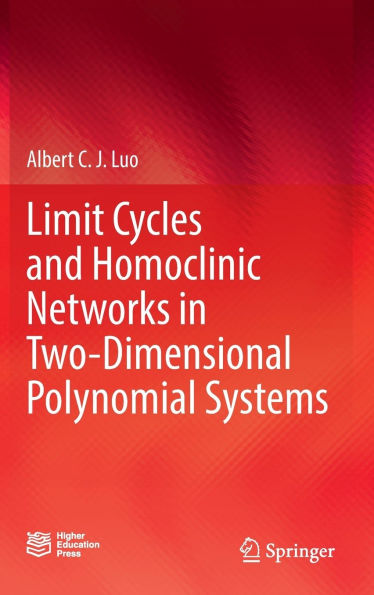Limit Cycles and Homoclinic Networks in Two-Dimensional Polynomial Systems
This book is a monograph about limit cycles and homoclinic networks in polynomial systems. The study of dynamical behaviors of polynomial dynamical systems was stimulated by Hilbert’s sixteenth problem in 1900. Many scientists have tried to work on Hilbert's sixteenth problem, but no significant results have been achieved yet. In this book, the properties of equilibriums in planar polynomial dynamical systems are studied. The corresponding first integral manifolds are determined. The homoclinic networks of saddles and centers (or limit cycles) in crossing-univariate polynomial systems are discussed, and the corresponding bifurcation theory is developed. The corresponding first integral manifolds are polynomial functions. The maximum numbers of centers and saddles in homoclinic networks are obtained, and the maximum numbers of sinks, sources, and saddles in homoclinic networks without centers are obtained as well. Such studies are to achieve global dynamics of planar polynomial dynamical systems, which can help one study global behaviors in nonlinear dynamical systems in physics, chemical reaction dynamics, engineering dynamics, and so on. This book is a reference for graduate students and researchers in the field of dynamical systems and control in mathematics, mechanical, and electrical engineering.
1145178108
Limit Cycles and Homoclinic Networks in Two-Dimensional Polynomial Systems
This book is a monograph about limit cycles and homoclinic networks in polynomial systems. The study of dynamical behaviors of polynomial dynamical systems was stimulated by Hilbert’s sixteenth problem in 1900. Many scientists have tried to work on Hilbert's sixteenth problem, but no significant results have been achieved yet. In this book, the properties of equilibriums in planar polynomial dynamical systems are studied. The corresponding first integral manifolds are determined. The homoclinic networks of saddles and centers (or limit cycles) in crossing-univariate polynomial systems are discussed, and the corresponding bifurcation theory is developed. The corresponding first integral manifolds are polynomial functions. The maximum numbers of centers and saddles in homoclinic networks are obtained, and the maximum numbers of sinks, sources, and saddles in homoclinic networks without centers are obtained as well. Such studies are to achieve global dynamics of planar polynomial dynamical systems, which can help one study global behaviors in nonlinear dynamical systems in physics, chemical reaction dynamics, engineering dynamics, and so on. This book is a reference for graduate students and researchers in the field of dynamical systems and control in mathematics, mechanical, and electrical engineering.
179.99
In Stock
5
1

Limit Cycles and Homoclinic Networks in Two-Dimensional Polynomial Systems
316
Limit Cycles and Homoclinic Networks in Two-Dimensional Polynomial Systems
316
179.99
In Stock

Product Details
| ISBN-13: | 9789819726165 |
|---|---|
| Publisher: | Springer Nature Singapore |
| Publication date: | 04/18/2025 |
| Edition description: | 2024 |
| Pages: | 316 |
| Product dimensions: | 6.10(w) x 9.25(h) x (d) |
About the Author
From the B&N Reads Blog
